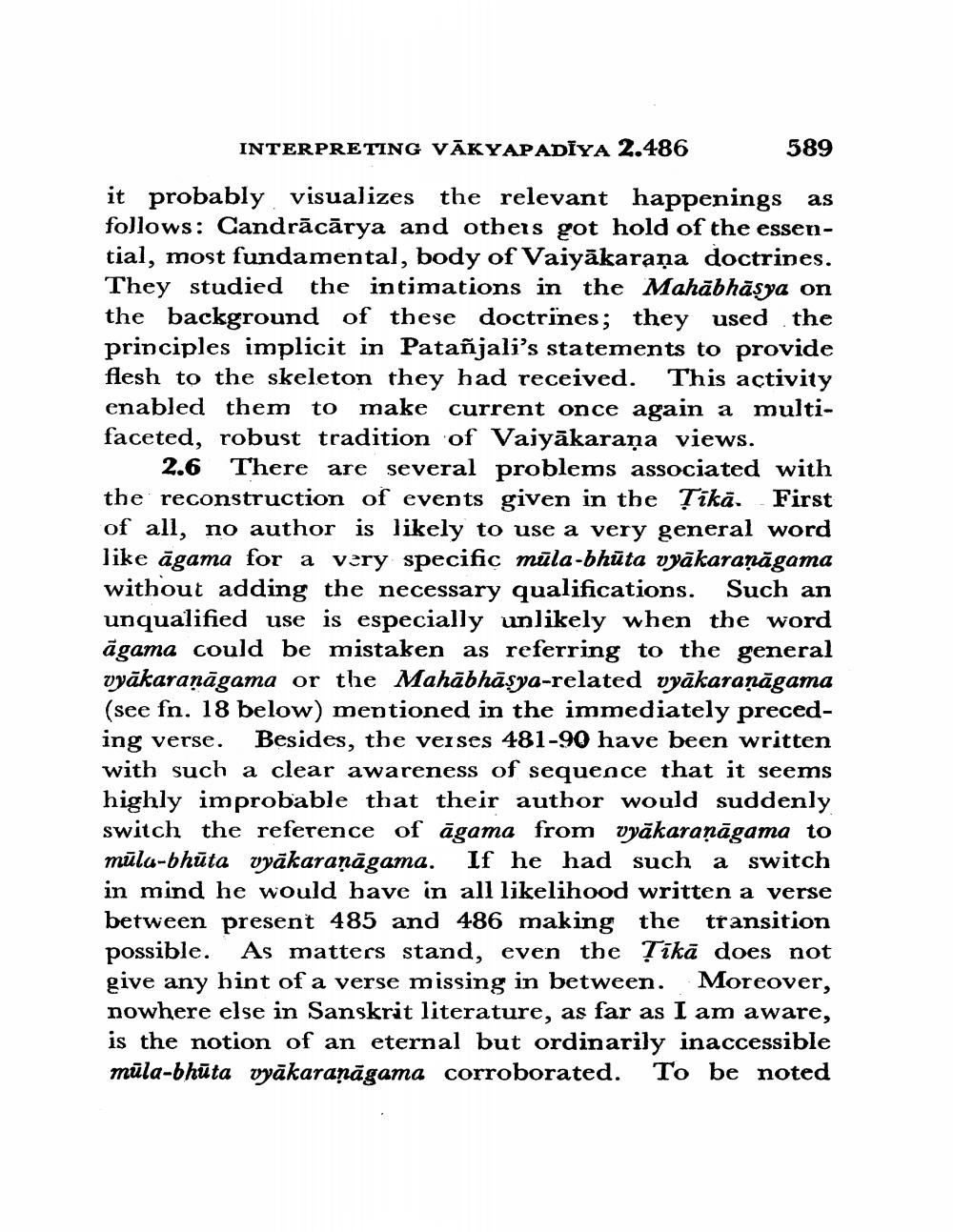Book Title: Interpreting Vakyapadiya Historically Author(s): Ashok Aklujkar Publisher: Ashok Aklujkar View full book textPage 9
________________ INTERPRETING VĀKYAPADIYA 2.486 589 it probably isualizes the relevant happenings as follows: Candrācārya and others got hold of the essential, most fundamental, body of Vaiyākaraņa doctrines. They studied the intimations in the Mahābhāsya on the background of these doctrines; they used the principles implicit in Patañjali's statements to provide flesh to the skeleton they had received. This activity enabled them to make current once again a multifaceted, robust tradition of Vaiyākaraņa views. 2.6 There are several problems associated with the reconstruction of events given in the Țikā. First of all, no author is likely to use a very general word like āgama for a very specific müla-bhūta vyākaraṇāgama without adding the necessary qualifications. Such an unqualified use is especially unlikely when the word āgama could be mistaken as referring to the general vyākaraṇāgama or the Mahābhāsya-related vyākaraṇāgama (see fn. 18 below) mentioned in the immediately preceding verse. Besides, the verses 481-90 have been written with such a clear awareness of sequence that it seems highly improbable that their author would suddenly switch the reference of agama from vyākaraṇāgama to mūlu-bhūta vyākaraṇāgama. If he had such a switch in mind he would have in all likelihood written a verse between present 485 and 486 making the transition possible. As matters stand, even the Tikā does give any hint of a verse missing in between. Moreover, nowhere else in Sanskrit literature, as far as I am aware, is the notion of an eternal but ordinarily inaccessible müla-bhūta vyākaranāgama corroborated. To be notedPage Navigation
1 ... 7 8 9 10 11 12 13 14 15 16 17 18 19 20 21
